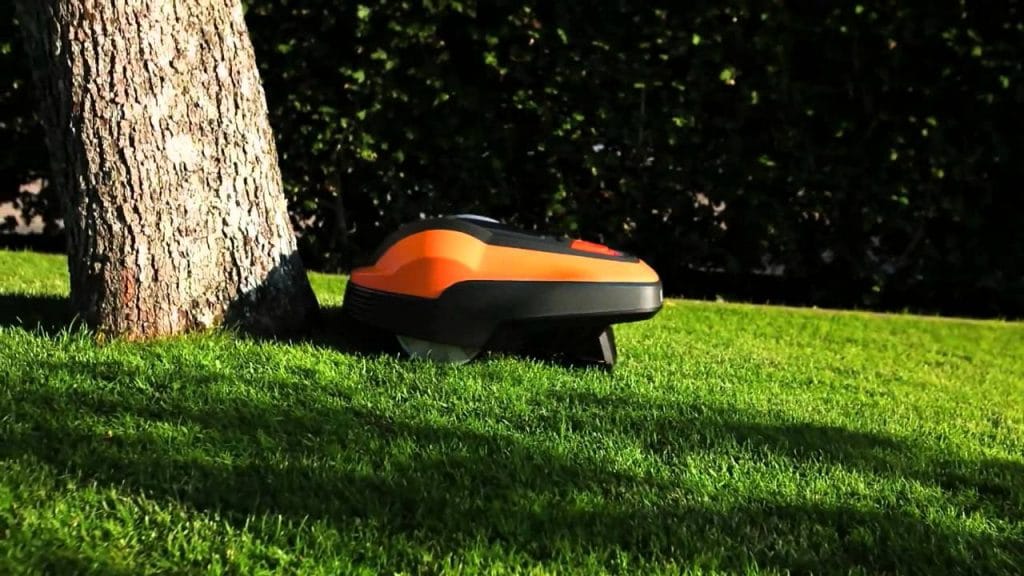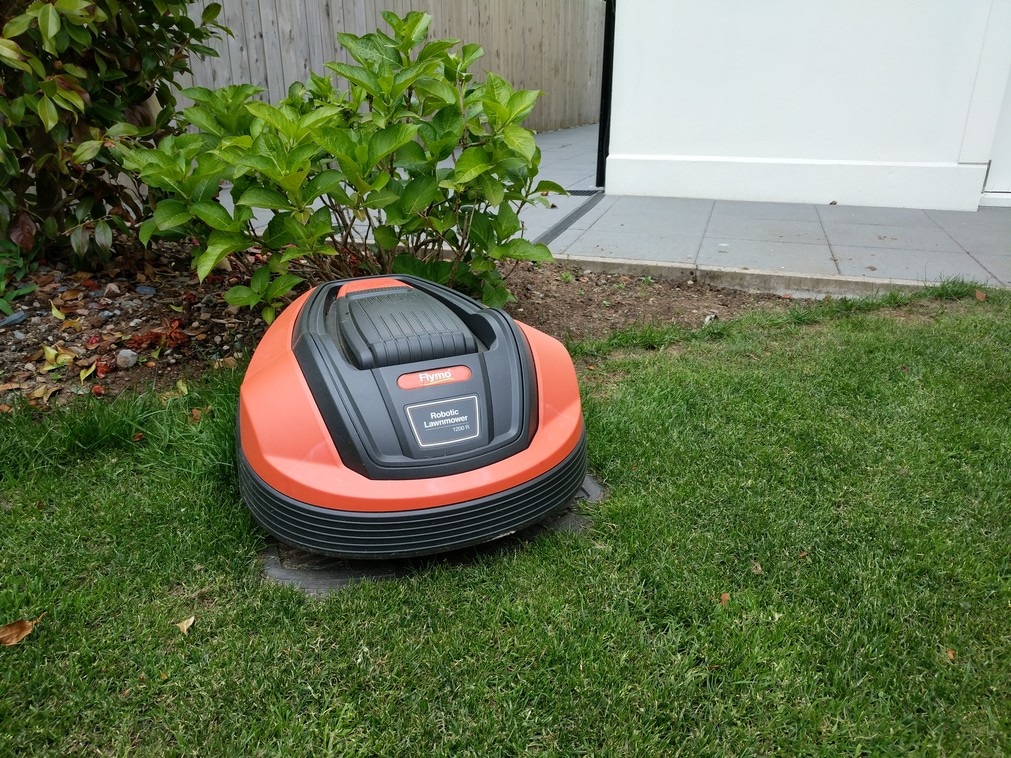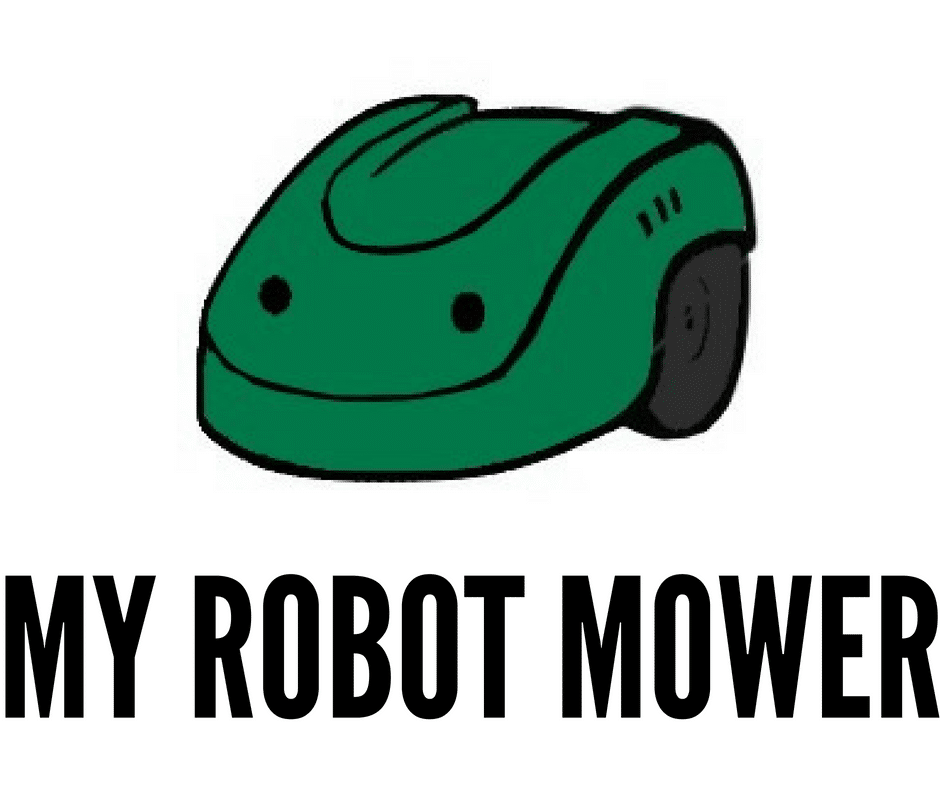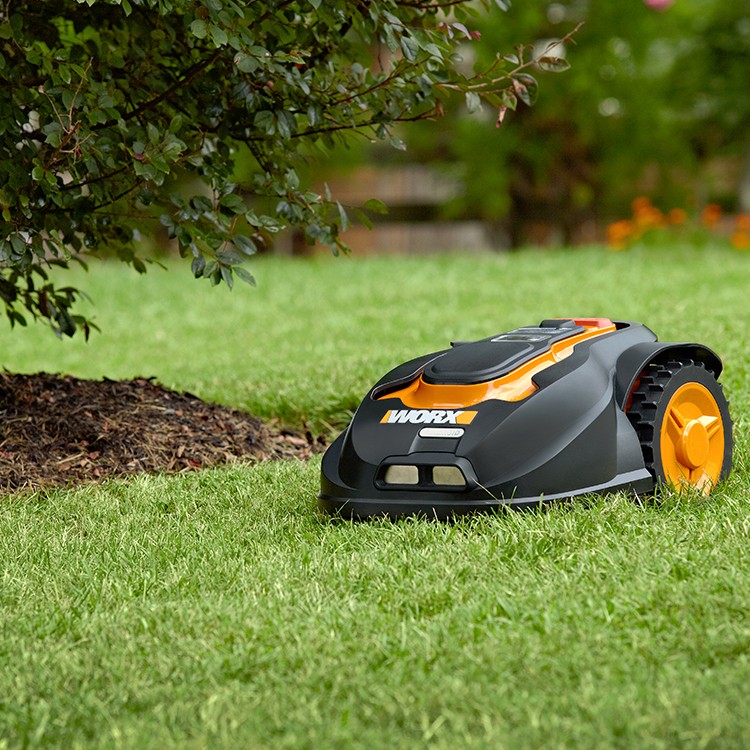Robotic lawn mowers are growing in popularity and sales are increasing at a rapid pace as they become better and better. Nearly everyone who visits my house will comment on my robotic lawn mower when they see it moving around my lawn. This article answers the 15 most common questions I get asked.
Can I Leave My Robot Lawn Mower Out All Year Round?
Robot lawn mowers are designed to operate in all weather conditions. The only exceptions are in very stormy or wet conditions or in sub-zero temperatures. In these circumstances, the robot lawn mower should be moved inside to avoid damage to the unit.
Once the temperature goes down in the autumn, your grass will stop growing. At this point, you should bring your unit into a safe, dry place until the start of the next growing season.
Some people choose to either build or purchase a garage or cover for their robot lawn mower, so that when it is in its base station it will be protected from rain, direct sunlight and strong wind. This can protect your robot mower from the extremes of weather. It will also prevent you from having to lift it inside except for at the beginning and end of the growing season. Check out my article about the best robot lawn mower garages.
Will A Robot Lawn Mower Do A Good Job? Right To The Edges?

Robot lawn mowers generally do a fantastic job on the vast majority of your grass. Around the edges, the lawn mower uses a perimeter wire to indicate the edge of the grass. Most models advise placing the perimeter wire very close to the edge of the grass where it is adjacent to patio or paving. In these locations, the mower will cut right to the edge of the grass.
Where the lawn is adjacent to flower beds or other obstacles which the mower could fall into or become stuck on, the advice is to place the perimeter wire further from the edge of the lawn. The exact distance will vary from model to model. This often results in a thin strip of grass which is not cut by the mower.
On my own lawn, I attempted to place the perimeter wire closer than the recommended distance to the edge of the lawn. Unfortunately this resulted in the mower frequently falling into the flower beds, and I subsequently had to adjust the placement of the perimeter wire.
This means with most robot lawn mowers, you must still have to attend to the edges of your grass with an edge trimmer or other suitable edging tool. In my case, I trim the edges approximately once per month, and this simple task keeps the lawn looking well kept.
More advanced and expensive models have different cutting blade technology and some claim to cut right to the edge on all lawns. No doubt, as the technology improves, this issue will be resolved. If you want to learn more about how automatic robot lawn mowers work, check out my article.
Will A Robot Lawn Mower Mow Around Items In My Garden (e.g. trampolines, play houses etc?)

Robot lawn mowers will have no problems mowing around most items in your garden. This is because the lawnmower reads a signal which is sent through a wire which runs around the perimeter of the cutting area, and also around any obstacles that are in the middle of the mowing area.
In addition to this, all robotic lawn mowers have built-in sensors which mean that when they encounter an unexpected obstacle, they will stop, backup, turn and move in a different direction. Some newer models are also now incorporating a GPS feature which allows it to more accurately determine it’s location and avoid temporary obstacles and have greater awareness of the edge of the mowing area. Read my article about how robot lawn mowers deal with obstacles here.
Can I Leave The Mower Unattended While Mowing?
One of the great features of robotic lawn mowers is that once they have been set up, they can be left to function with no supervision whatsoever. You will be able to schedule your mower to cut the grass at whatever time and day is most suitable to you, and rely on it to get on with the job with no intervention. Robot lawn mowers are extremely quiet so there really is no issue with scheduling the robot lawn mower to work at night or at times when you’re enjoying other areas of the garden.
How Safe Are Robot Lawn Mowers?
Robot lawn mowers are incredibly safe compared to conventional lawn mowers. Despite sales of several million robot lawn mowers over the last 20 years, there are no reports of injuries requiring treatment in hospital emergency departments.
All models have a collision sensor, so that the lawnmower stops, backs up, turns and moves away from anything that it unexpectedly encounters on the lawn. When a robotic lawnmower is lifted from the ground for any reason while it is operating, the blades stop immediately and therefore there is no risk of injury to an inquisitive pet or child. in comparison to conventional lawn mowers, there is no comparison in terms of safety in use. Read my guide to robot lawn mower safety features here.
What Happens During An Unexpected Power Cut?
In the event of an unexpected power cut, the robot lawn mower will stop immediately. Although the robot lawn mower itself is battery powered, the perimeter wire has a current running through it, which the robot lawn mower detects and is essential for its operation. Therefore when power to this is interrupted for any reason, the robot lawnmower will stop until such times as power is restored. Once power is restored, the mower will revert to it’s previous activity, with no loss of settings.
Do Robot Lawn Mowers Cope With Hills?

Robot lawn mowers generally cope well with hills. More advanced models can cope with higher gradient slopes. See this article for a quick summary of robot lawn mower slope performance by model. I would always recommend checking the gradient of the steepest slope in your garden before shopping for a robot lawnmower to ensure that you buying model that can comfortably cope with the entirety of your grass.
How Long Does A Robot Lawn Mower Take To Cut My Lawn?
Although this will vary from model to model, cutting time is invariably slower than a human cutting the same area of grass. My own robot lawn mower takes approximately an hour to mow an area of about 30 square meters.
Having said this, it does not particularly matter how long it takes to cut, as the mower does not require human supervision to do it’s job, so it can be scheduled to work at anytime, day or night on any combination of days of the week to make sure that your grass looks good at all times.
The main limiting factor is the size of the battery. Generally, more expensive models have higher capacity batteries and are generally rated for larger lawns.
Will A Robotic Lawnmower Work On Long Grass?
If your grass is longer than 15 cm then you should mow your lawn prior to installing a robot system. This is best practice for two reasons.
Firstly, longer grass will leave substantial amounts of cuttings on the surface of your lawn, which will look unsightly. The robot lawn mower will generally spread these cuttings and integrate them into the grass evenly over a period of time, or the grass could be raked after the first cut if there were particularly large amounts of cuttings.
Secondly, the robot lawnmower may struggle to manage to cut particularly long grass due to the limitation of power in the robot motor.
How Much Does It Cost To Run An Automatic Robot Lawn Mower?
Robot lawn mowers are surprisingly economical. The model that I own states in the user manual that, that under maximum usage, for a 400 square meter lawn, it will use 4 kilowatt hours of electricity per month. This equates to about 60p per month for electricity use in my local domestic market. Costs in the USA are likely to be less that $1 per month due to typically lower electricity costs.
Can The Cutting Height Of The Grass Be Adjusted?
The cutting height can be easily adjusted using a simple adjustment mechanism. The exact minimum and maximum cutting heights vary from model to model, but the range of heights of mouse models is likely to satisfy almost every gardener.
I like to keep my lawn quite short and neat, and this is why I would always recommend, where possible, burying the perimeter wire to enable you to set the cutting blades lower without being concerned about cutting the perimeter wire. Burying the perimeter wire is a little bit more work when you’re first setting up your robotic lawn mower, but is really worthwhile in the longer term.
Is The Perimeter Wire Safe?
Although there is a weak electrical signal passing through the perimeter wire, it is entirely safe for adults, children and pets alike. The electrical signal is approximately the same level as a telephone cable, and therefore direct contact will not cause any electric shock. The perimeter wire is necessary as this allows the lawnmower to recognize the boundaries of it’s working space.
Can The Perimeter Wire Be Buried?
The perimeter wire can be pegged to the grass or buried, depending on your preference. The model that I own indicates that either pegging the perimeter wire into the surface of the grass or burying the perimeter wire up to 10 centimeters deep in the ground are equally valid options for installation.
The general advice is that if you do not bury the perimeter wire, the cutting height of the blades of the robot lawn mower should be set a little bit higher, to avoid unexpectedly cutting or damaging the perimeter wire. Over time, the grass will grow over the top of the perimeter wire and the cutting height can be lowered. I have found that the perimeter wire normally becomes sufficiently buried within 3 to 4 months during the growing season.
However, as alluded to previously I would always recommend burying the perimeter wire, as this eliminates the risk of the perimeter wire being unexpectedly cut, and gives you peace of mind to set the cutting blade at your desired height from day one of installation.
In addition to this, it enables you, depending on the depth of burying the perimeter wire, to aerate and scarify your grass, whilst being reasonably confident that you will not damage the perimeter wire.
One downside of burying the perimeter wire, is that if there is a break for some reason, such as rock movement under the soil or frost causing freeze-thaw and eventual damage to the perimeter wire, it does make it more difficult to identify the source of the break in the wire and undertake subsequent repair.
Repair can be done reasonably simply, and I do not think this should deter you from burying the perimeter wire as I think this is a much better option.
What Maintenance Is Required For Robotic Lawn Mowers?
Robot lawn mowers need very little maintenance, considerably less than a conventional lawnmower. For better reliability and longer life, there are a few simple measures to ensure that your robotic lawnmower is maintained properly. When you first install your robotic lawnmower, you should ensure that the blades and blade discs are inspected approximately once per week. Once you’re confident that the amount of wear is low, the inspection interval can be increased.
Generally, I inspect my robomower about once per month and clean the underside of the machine, removing any residue and dried grass. I use a stiff brush to clean the underside of the machine and the wheels. Failure to do this will result in reduced ability to manage slopes and turn and change direction in wet or muddy conditions.
I then check that the cutting blades are moving freely and do not need changed. The lifetime of the blades of your robotic lawnmower will vary considerably depending on a number of factors. These include the amount of time that your robotic lawnmower is in operation and the size of the working area, the type of grass, the amount of growth of the grass, the type of soil, and the presence of debris such as pine cones, twigs and stones.
As I am based in the UK, the growing season is generally from March to the end of October. I take my mower into a clean and dry area at the end of October and do a simple winter service. This generally involves a more thorough clean and checking all of the blades and bearings. My mower recommends that the battery is charged before storing for winter and that the mower is now stored upright. I’ve got a detailed article about robot mower maintenance here.
Why Are Robot Lawn Mowers So Popular?
Whilst robotic lawnmowers are still a niche product and a bit of a novelty for most people, growth in sales is accelerating and the market is forecast to double over the next four years. I think there are a substantial number of people who do not particularly enjoy mowing their lawn, and would rather spend their time doing other things outside in the garden or elsewhere.
Certainly, the reason I purchased my first robotic lawn mower was that I had a very hectic life, with a full time job and two small children, and although I enjoy working in the garden and do enjoy cutting the grass with a manual lawn mower, I liked the idea of freeing up time to do other things.
My kids also love the robot lawn mower, and love to watch it out the window and comment on its every move. When visitors come round and see the robot working away, cutting the grass, it usually becomes a topic of conversation. I also have quite an interest in technology and automation, so long before I was able to purchase a robot lawn mower, I loved the idea of them and thought that I would purchase one at some stage.
I hope this article has been helpful for anyone who is considering buying an automatic robotic lawnmower. There are many factors to weigh up, but I hope this article has answered some of the common questions that people want to know before they make a purchase. I have written a comprehensive guide to choosing the right robotic lawn mower. It details all of the important factors to think about when choosing an automower, as well as providing recommendations for the best products for every size of lawn.
If you have any questions, please get in touch using the comment section below. I would be delighted to help you with any questions you have about robotic mowers.


